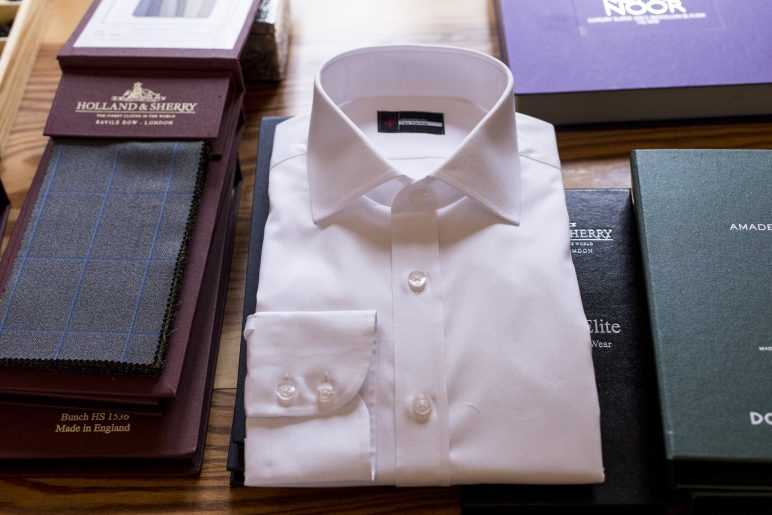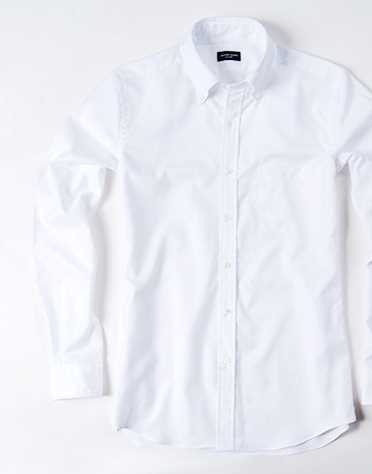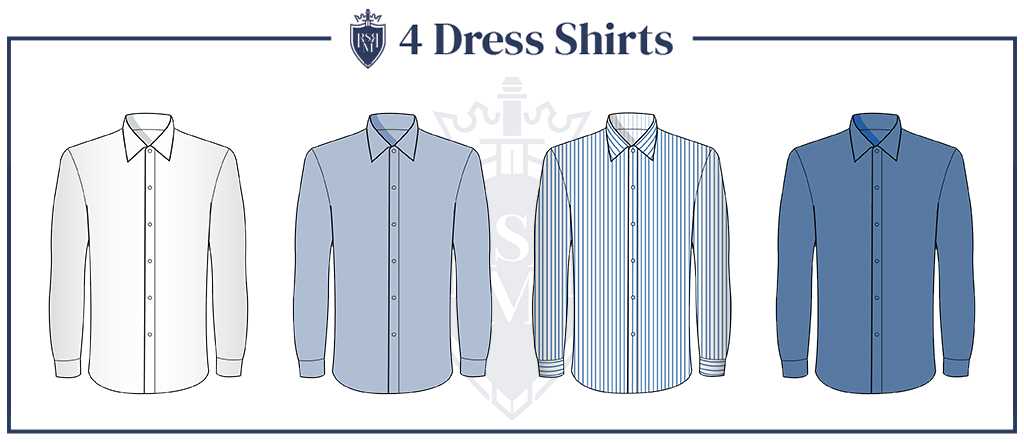




Dress shirts are a staple in any wardrobe, but they can quickly lose their crispness and look worn if not properly cared for. Washing dress shirts may seem like a simple task, but there are a few key steps and tips to keep in mind to ensure that your shirts always look fresh and professional.
First and foremost, it’s important to check the care label on your dress shirt. This will provide valuable information on the proper washing method and any special considerations to keep in mind. Some dress shirts may require hand washing or dry cleaning, while others can be machine washed.
Once you’ve determined the proper washing method, it’s time to gather your supplies. You’ll need a gentle detergent, a washing machine or basin, and access to warm or cold water. It’s important to use a gentle detergent to prevent any damage to the fabric or color of the shirt.
If you’re machine washing your dress shirt, it’s important to button all of the buttons and turn the shirt inside out. This will help to prevent any snagging or damage to the buttons or collar during the washing process. Use a delicate or gentle cycle, and avoid using bleach or fabric softener, as these can weaken the fabric and affect the color of the shirt.
If you’re hand washing your dress shirt, fill a basin or sink with warm or cold water and add a small amount of gentle detergent. Gently agitate the shirt in the water, paying extra attention to any stains or areas of heavy soiling. Once the shirt has been thoroughly washed, rinse it with clean water and gently squeeze out any excess water. Avoid wringing or twisting the shirt, as this can lead to wrinkles and damage to the fabric.
After washing, it’s important to properly dry your dress shirt. If machine washing, remove the shirt from the machine as soon as the cycle is complete to prevent wrinkles. Hang the shirt up and use a clothes hanger with clips to hang it by the tail, or lay it flat to air dry. Avoid using a clothes dryer, as this can shrink or damage the shirt.
If hand washing, gently squeeze out any excess water and lay the shirt flat on a clean towel. Roll the towel up with the shirt inside to help absorb any remaining moisture. Once the excess moisture has been absorbed, lay the shirt flat or hang it up to air dry.
By taking the time to properly wash and care for your dress shirts, you can extend their lifespan and keep them looking fresh and professional. Following these simple steps and tips will ensure that your shirts always look their best, whether you’re dressing up for a formal event or heading to the office.
Understanding the Different Types of Dress Shirts
When it comes to dress shirts, there are several different styles and types to choose from. Each type has its own unique features and is suited for different occasions. It’s important to understand the different types of dress shirts so you can choose the one that best fits your style and needs.
1. Classic Dress Shirts
Classic dress shirts are the most common and versatile type of dress shirts. They are characterized by a plain front with no pockets, a pointed collar, and barrel cuffs. These shirts are perfect for formal occasions or professional settings.
2. Button-Down Dress Shirts
Button-down dress shirts have an added button on the collar, which helps to secure the collar to the shirt. This type of dress shirt is more casual compared to the classic dress shirt and is commonly worn with a sport coat or blazer.
3. Spread Collar Dress Shirts

Spread collar dress shirts have a wider collar spread compared to other types of dress shirts. This gives a more modern and contemporary look. These shirts are suitable for those who prefer a more fashionable and stylish appearance.
4. Wingtip Collar Dress Shirts
Wingtip collar dress shirts are typically worn with tuxedos or formal suits. The collar has small “wings” that fold down and are secured with a bowtie. They are a must-have for formal events such as weddings, galas, or black-tie parties.
5. French Cuff Dress Shirts
French cuff dress shirts have extra-long cuffs that fold back and are fastened with cufflinks. These shirts are considered more formal and are often worn for special occasions or in professional settings that require a sophisticated look.
6. Patterned Dress Shirts
Patterned dress shirts come in a variety of patterns, such as stripes, checks, or dots. These shirts can add a touch of personality and style to your outfit. They are suitable for both formal and casual occasions, depending on the pattern and colors.
7. Non-Iron Dress Shirts
Non-iron dress shirts are made with wrinkle-resistant fabric, which makes them a convenient choice for those who want a crisp and professional look without the hassle of ironing. These shirts are perfect for frequent travelers or anyone with a busy lifestyle.
8. Slim-fit Dress Shirts

Slim-fit dress shirts are designed to provide a more tailored and fitted look. They have a narrower cut around the waist and chest for a modern and fashionable appearance. These shirts are ideal for those who prefer a sleek and stylish silhouette.
| Type | Description |
|---|---|
| Classic Dress Shirts | Plain front, pointed collar, and barrel cuffs |
| Button-Down Dress Shirts | Collar secured with an added button |
| Spread Collar Dress Shirts | Wider collar spread for a modern look |
| Wingtip Collar Dress Shirts | Collar with fold-down “wings” for formal occasions |
| French Cuff Dress Shirts | Extra-long cuffs fastened with cufflinks |
| Patterned Dress Shirts | Shirts with various patterns for added style |
| Non-Iron Dress Shirts | Wrinkle-resistant fabric for a crisp look |
| Slim-fit Dress Shirts | Tailored and fitted shirts for a sleek appearance |
With so many options available, it’s important to consider your personal style, the occasion, and the level of formality when choosing a dress shirt. By understanding the different types of dress shirts, you can make an informed decision and ensure you always look your best.
Learn about the various fabric types and styles of dress shirts

Dress shirts come in a variety of fabric types and styles, each offering its own unique characteristics and benefits. Understanding the different options available can help you make an informed decision when purchasing and caring for your dress shirts.
Fabric Types
There are several commonly used fabric types for dress shirts:
- Cotton: Cotton is the most popular fabric choice for dress shirts. It is breathable, comfortable, and has a smooth texture. It is also known for its durability and is easy to care for.
- Lin
Pre-Treating Stains on Dress Shirts

Accidents happen, and dress shirts can get stains from various sources such as food, beverages, or oils. It’s important to pre-treat these stains before washing to increase the chances of complete removal. Follow these steps to effectively pre-treat stains on your dress shirts:
- Identify the stain: Before treating the stain, identify the type of stain you’re dealing with. This will help you choose the appropriate pre-treatment method.
- Act quickly: The sooner you start treating the stain, the better your chances are of removing it. Don’t let the stain set for too long on the fabric.
- Blot the stain: Gently blot the stain with a clean cloth or paper towel to remove any excess liquid. Be careful not to rub the stain, as it can spread and penetrate deeper into the fabric.
- Test a small area: Before applying any stain remover directly to the fabric, test it on a small, inconspicuous area of the shirt to ensure it doesn’t cause any damage or discoloration.
- Choose a stain remover: Depending on the type of stain, choose an appropriate stain remover. Common options include liquid laundry detergent, stain sticks, or specialized stain removers designed for specific types of stains, such as grease or protein-based stains.
- Apply the stain remover: Follow the instructions on the stain remover product and apply it directly to the stained area. Use a small, soft brush or your fingertips to gently work the stain remover into the fabric.
- Let the stain remover sit: Allow the stain remover to sit on the fabric for the recommended amount of time. This will give it a chance to break down the stain and make it easier to remove.
- Wash the shirt: After pre-treating the stain, wash the dress shirt according to the care instructions on the garment label. Using the appropriate water temperature and laundry detergent, launder the shirt as usual.
- Inspect the shirt: Once the shirt is washed, inspect it to see if the stain has been completely removed. If the stain is still present, avoid drying the shirt as the heat can set the stain. Instead, repeat the pre-treatment process and wash it again.
By properly pre-treating stains on your dress shirts, you can improve the chances of removing them successfully during the washing process. Remember to always follow the care instructions on the shirt and use appropriate stain removal products for different types of stains.
Tips for removing common stains from dress shirts
Dress shirts can easily become stained during everyday wear. Whether it’s a splash of coffee in the morning or a sauce stain from lunch, it’s important to know how to properly remove these stains to keep your shirts looking fresh. Here are some tips for removing common stains from dress shirts:
- Coffee or tea stains: Mix equal parts white vinegar and water, then dab the stained area with the mixture using a clean cloth. Let it sit for a few minutes, then rinse with cold water.
- Oil or grease stains: Sprinkle some talcum powder or cornstarch on the stain and let it sit for a few minutes to absorb the oil. Gently brush off the powder, then apply a small amount of dish detergent to the stain and rub it in with your fingers. Let it sit for a few minutes, then blot with a damp cloth.
- Wine stains: Blot the stained area with a clean cloth or paper towel to remove as much of the wine as possible. Mix a solution of equal parts hydrogen peroxide and liquid dish soap, then apply it to the stain with a clean cloth. Let it sit for a few minutes, then rinse with cold water.
- Ink stains: Place the stained area of the shirt onto a clean towel and dab the stain with rubbing alcohol using a cotton ball. Blot the stain with a clean cloth until the ink is removed, then rinse with cold water.
- Grass stains: Mix equal parts hydrogen peroxide and liquid dish soap, then apply it to the stain using a clean cloth. Gently rub the stain with your fingers, then rinse with cold water.
Remember to always check the care label on your dress shirts before attempting to remove stains, as some fabrics may require special treatment. It’s also a good idea to test any stain-removal method on a small, inconspicuous area of the shirt first to ensure that it doesn’t cause any damage.
Hot PickNew Enzyme Stain Remover SprayEffective solution for stubborn stainsThis powerful stain remover uses active enzymes to tackle tough stains on all fabrics, offering a quick and efficient cleaning solution for any household.Sorting and Preparing Dress Shirts for Washing
Before washing your dress shirts, it’s important to properly sort and prepare them. This will ensure that they are cleaned effectively and maintain their quality and freshness over time. Follow these steps to sort and prepare your dress shirts for washing:
Step 1: Check the Label
Start by checking the care label on each dress shirt. The label will provide important information about the recommended washing instructions, including water temperature and any specific precautions to take.
Step 2: Separate by Color
Sort your dress shirts by color to prevent any bleeding or color transfer during the washing process. Separate whites, lights, and darks into different piles.
Step 3: Remove Stains
If any of your dress shirts have stains, pretreat them before washing. Use a stain remover or a mild detergent and gently rub it into the stained area. Let it sit for a few minutes before proceeding to the next step.
Step 4: Undo Buttons and Cufflinks
Before washing, make sure to undo all the buttons on the dress shirts, including the cuffs. Remove any cufflinks or other accessories, such as collar stays, to prevent damage during the washing process.
Step 5: Turn Shirts Inside Out
Turning your dress shirts inside out will help protect the outer fabric and preserve their color and appearance. This will also help to prevent any buttons from snagging or coming off during the wash.
Step 6: Use a Mesh Bag or Pillowcase
To further protect your dress shirts, consider placing them in a mesh laundry bag or a pillowcase before washing. This will help prevent any buttons or other delicate details from getting caught or damaged by the washing machine.
Step 7: Select the Appropriate Wash Cycle
Based on the care label instructions, select the appropriate wash cycle on your washing machine. Use a gentle or delicate cycle to minimize any potential damage to the fabric and ensure a thorough but gentle clean.
Step 8: Choose the Right Detergent
For dress shirts, it’s best to use a mild detergent that is suitable for delicate fabrics. Avoid using bleach or harsh chemicals, as they can damage the fabric and cause discoloration. Follow the detergent instructions for the correct amount to use.
Step 9: Wash and Dry Separately
Wash your dress shirts separately from other garments to avoid any potential damage or color transfer. After washing, remove them from the washing machine and hang them up to air dry. Avoid using a dryer, as it may shrink or damage the fabric.
Step 10: Iron or Steam

Once your dress shirts are dry, you may need to iron or steam them to remove any wrinkles. Follow the care label instructions for the appropriate ironing temperature and use a steam iron or steamer to achieve a crisp, fresh look.
Top RatedRussell Hobbs Power Steam IronEfficient ceramic soleplate for easy ironingThis high-performance steam iron features a large water tank and self-cleaning function to keep your clothes looking impeccable while ensuring smooth, efficient ironing.By properly sorting and preparing your dress shirts for washing, you can maintain their quality and appearance for years to come. Follow these steps to ensure your dress shirts stay looking fresh and well-maintained after every wash.
How to properly separate dress shirts and prepare them for washing
Properly separating and preparing your dress shirts for washing is crucial to keep them looking fresh and to prevent any damage during the laundry process. Follow these steps to ensure your dress shirts are washed properly:
- Check for stains or spots: Before washing your dress shirts, examine them for any visible stains or spots. Treat these areas with a stain remover or pre-treatment solution, following the instructions on the product. This will help to remove difficult stains before washing.
- Unbutton and untuck: Before placing your dress shirts in the washing machine, unbutton all the buttons, including collar and cuffs. Untuck the shirts and remove any collar stays or accessories. This will help to ensure the shirts are thoroughly cleaned and prevent any damage to the buttons or other delicate details.
- Sort by color: It’s important to separate your dress shirts based on their color to prevent color bleeding. Sort them into light-colored and dark-colored groups. This will help to keep your shirts looking their best and avoid any unwanted color transfer during the wash.
- Check fabric types: Different fabrics require different care instructions. Check the labels on your dress shirts and separate them based on their fabric types. For example, separate cotton shirts from silk or delicate fabrics. This will help to prevent damage to the more delicate shirts and ensure they are treated properly during the wash.
- Empty pockets: Before washing, make sure to empty the pockets of your dress shirts. Remove any items such as pens, paper, or coins that may cause damage to the shirts or the washing machine. This will help to prevent any unnecessary wear or tear.
- Turn the shirts inside out: To protect the outer surface of your dress shirts, turn them inside out before placing them in the washing machine. This will help to preserve the color and prevent any friction-related damage during the wash.
- Add the appropriate detergent: Choose a gentle detergent that is suitable for dress shirts and add the recommended amount to the washing machine. Avoid using bleach or harsh chemicals that may damage the fabric or cause discoloration.
- Select the appropriate wash cycle: Set the washing machine to a gentle cycle or a delicate setting to ensure your dress shirts are washed gently and with care. Avoid using high heat or a heavy-duty wash cycle, as this can cause shrinkage or damage to the fabric.
By properly separating and preparing your dress shirts for washing, you can ensure they are cleaned effectively while preserving their quality and appearance. Following these steps will help you maintain fresh and crisp dress shirts for a longer period of time.
Choosing the Right Detergent and Washing Machine Settings
Properly washing your dress shirts begins with choosing the right detergent and setting your washing machine correctly. By taking these steps, you can ensure that your shirts come out looking fresh and clean without any damage.
Must-HaveEcozone Ultra Concentrated Laundry LiquidGentle on skin, tough on stainsThis eco-friendly laundry liquid effectively removes stains while being kind to sensitive skin. Ideal for the whole family, it's a sustainable choice for everyday cleaning.1. Select a suitable detergent
When it comes to washing dress shirts, it’s important to use a gentle detergent that will not damage or fade the fabric. Look for detergents that are specifically labeled as suitable for delicates or fine fabrics. Avoid using harsh detergents or ones that contain bleach or brightening agents, as they can cause discoloration or weaken the fabric over time.
2. Use the right washing machine settings
Properly setting your washing machine can help ensure that your dress shirts are cleaned thoroughly without being subjected to excessive agitation or heat. Here are some recommended settings:
- Water temperature: Choose a cool or lukewarm setting to prevent shrinking or damaging the fabric.
- Agitation level: Opt for a gentle or delicate cycle to minimize agitation and reduce the risk of wrinkling or stretching the fabric.
- Spin cycle: Select a low or medium spin speed to prevent excessive wrinkling and help retain the shirt’s shape.
It’s also a good idea to separate your dress shirts from other garments, such as jeans or towels, to prevent any friction or color transfer during the wash cycle.
3. Consider hand-washing or delicate cycle
If you have the time and prefer a gentler approach, you might consider hand-washing your dress shirts. Fill a basin or sink with lukewarm water and a small amount of gentle detergent. Gently agitate the shirts by hand, taking care not to twist or wring them. After rinsing, gently squeeze out excess water and reshape the shirt before air-drying.
If you opt for using a washing machine, choose the delicate cycle or a similar setting that is designed for delicates. This will help minimize the risk of damage to your dress shirts.
By carefully choosing the right detergent and properly setting your washing machine, you can keep your dress shirts looking fresh and clean for a long time. Following these tips will help you maintain the quality and appearance of your shirts, ensuring that they last and continue to make a sharp impression.
FAQ
How often should I wash my dress shirts?
It is recommended to wash your dress shirts after every two wears to maintain their cleanliness and freshness.
Can I wash my dress shirts in a washing machine?
Yes, you can wash your dress shirts in a washing machine. However, it is important to follow the proper washing instructions to avoid any damage or shrinkage.
What temperature should I use when washing dress shirts?
It is best to use a cool or lukewarm water temperature when washing dress shirts. Hot water can cause shrinkage and damage the fabric.
Should I use bleach when washing dress shirts?
No, it is not recommended to use bleach when washing dress shirts. Bleach can weaken the fabric and cause it to yellow over time. Instead, use a mild detergent and spot treat any stains.
What is the best way to dry dress shirts?
The best way to dry dress shirts is to hang them up and let them air dry. Avoid using a dryer as it can cause shrinkage and wrinkles. If you must use a dryer, use a low heat setting and remove the shirts while they are still slightly damp.
What is the best way to wash a dress shirt?
The best way to wash a dress shirt is to follow the care instructions on the shirt’s label. Generally, you should machine wash the shirt in cold water on a gentle cycle with like colors. Use a mild detergent and avoid bleach or fabric softeners. After washing, hang the shirt to air dry or lay it flat to prevent wrinkles.
Can I wash dress shirts with other clothing items?
It is generally recommended to wash dress shirts with like colors and fabrics to prevent color bleeding or damage. Washing dress shirts with other clothing items made from similar materials will help maintain the quality and appearance of the shirts.
Trending NowTezraftaar Garment Cover BagsProtect clothes with convenient coversThese transparent garment covers protect your clothing from dust and dirt, making it easier to find and organize your wardrobe while ensuring long-lasting protection.Video














